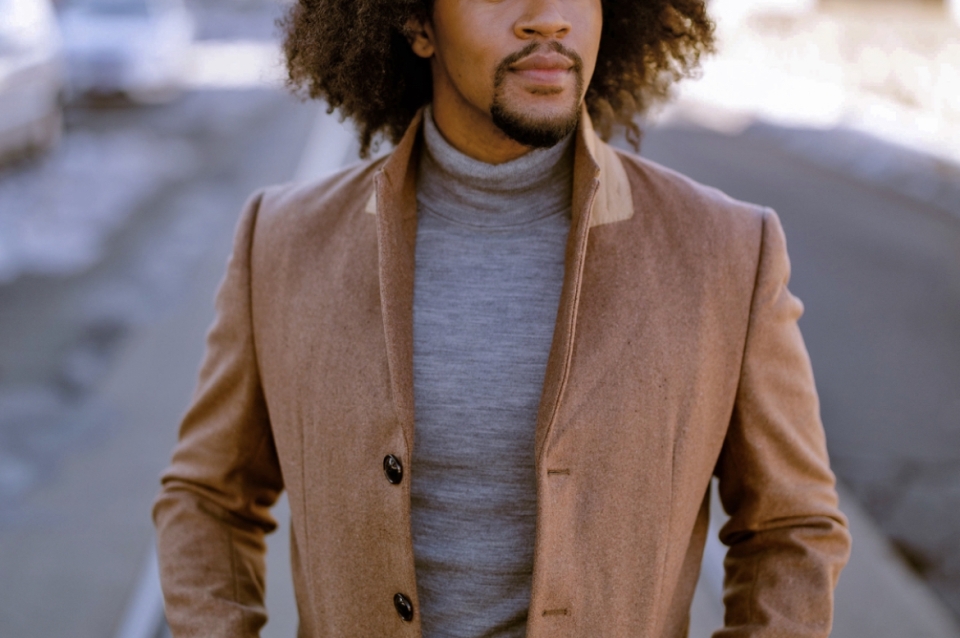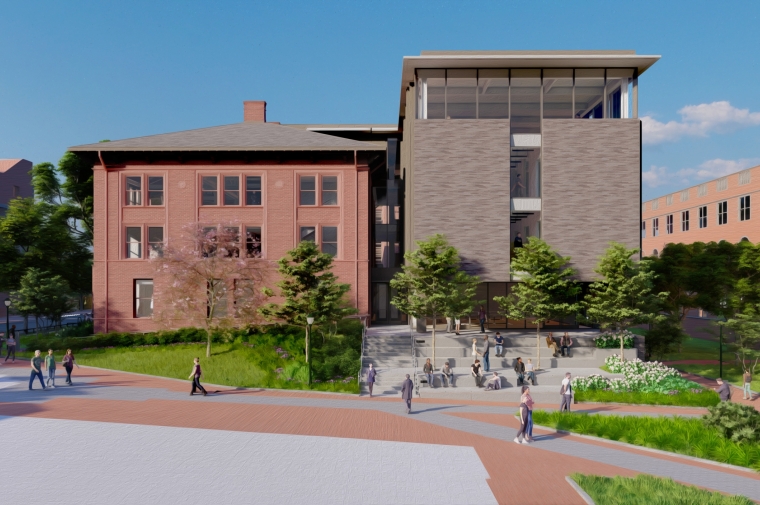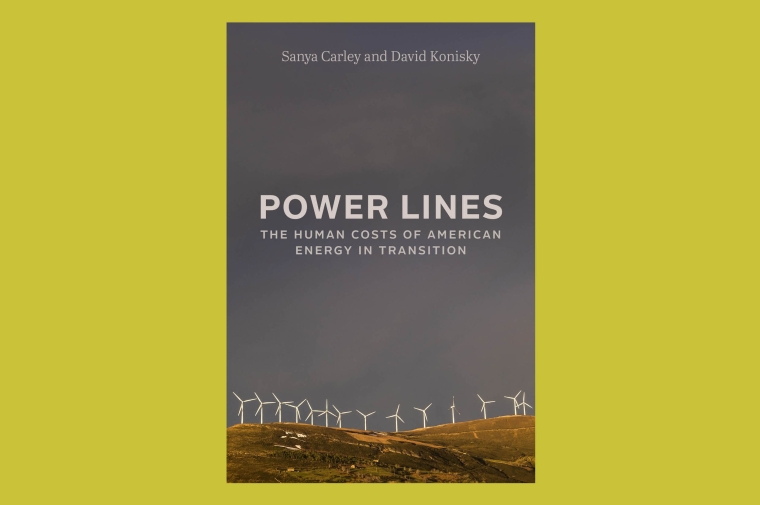July 7, 2021
Stuart Weitzman School of Design
102 Meyerson Hall
210 South 34th Street
Philadelphia, PA 19104
Get the latest Weitzman news in your Inbox
Media Contact
Michael Grant
mrgrant@design.upenn.edu
215.898.2539
This spring, Matt Miller, a post-doctoral fellow who teaches in the Department of City and Regional Planning and is better known as Dr. Matt, was appointed to the newly-created role of director of Justice and Belonging (JxB). His appointment, which began July 1, creates a focal point for work undertaken at all levels of the School to make Weitzman more welcoming, socially accountable, and intellectually transformative for current and former students, faculty and staff members. In the first part of a three-part interview, Miller talks about growing up in the Bay Area, his path to planning and to Penn, and his vision for a more inclusive student experience.
You grew up in the Bay Area and then went to school in Palo Alto, Los Angeles, and Boston. How did those cities influence your understanding of placemaking or place keeping?
I grew up in East Palo Alto, which is one of my childhood cities—I had multiple. I think they were places that showed me where people belong and don’t belong and why. Economically, socially, culturally, and of course, spatially.
I’m the son of an electrician and multi-talented homemaker mother. She’s a native of East Palo Alto, but her mom’s from Arkansas and my parents met in the Bay Area. When I was around 10 years old, we had to move out of the Bay Area to the Central Valley. And I’m one of seven kids. We were crammed in this apartment, this two-bedroom apartment that was bursting at the seams, and my mom really took the initiative to go looking for homes. And this is around 1999, and the dot-com boom happened. And the price of a basic two- or three-bedroom home, in the Mountain View area, went from a few hundred thousand to a million. And we were economically just displaced.
Thankfully, my parents were able to get a mortgage, although it was subprime, as we later found out. But they were able to get a home out in a small town called Tracy, which is near Stockton. We moved in the middle of the [school] year, and we were commuting. So imagine my mom, at 5:00am, packing six kids all up to go to her job in the Bay Area and us going to school in the Bay Area every day, two hours each way. And it was a culture shock.
We were raised Pentecostal. So even when we weren’t going back to the Bay Area proper for school and stuff, we were still going there for church. As part of the process of really trying to put our roots down in the Central Valley, my parents put us into homeschooling for a year. My mom gave up her job and then our church. I was helping her printing out Google Map listings at the time of churches that we could find. When she had some free time, we would go and drive around looking for churches. And it was just really disappointing, because we were looking for a Pentecostal-oriented church—music is a big part of that experience—and we didn’t find anything. And I remember her crying and me crying about that and realizing, “Wow, we’re moving to a place that has no semblance of the blackness that I remember from the Bay Area.”
I actually grieve every time I go back, because I remember the soul that was there that has been pushed out and erased in a lot of ways. When I went to Stanford, I was super excited to come back to the area and I remember realizing, particularly being in the Stanford bubble, how white it became—violently white. We had a police chief who at one point told the news, when there was a burglary or something, that they would look for anyone that wore a do-rag. I was a co-president of the Stanford NAACP, and me and one of my best friends, Michael Tubbs, who went to Stanford at the same time, we were outraged. We went down to the Palo Alto City Council meeting and spoke, and had conversations with the police chief, who ended up resigning. I was still figuring out what I wanted to study, but I did have an understanding that place wasn’t just about where I slept at night, it was about a structure of feeling.
How did you come to focus on Los Angeles for your dissertation, The Geography of Black Commerce?
My first internship, when I was an undergrad, in public service at least, was for the US EPA’s regional office in LA. I was part of the community and ecosystems division, which focuses on environmental justice enforcement—issues like lead pollution, water pollution. The EPA linked me up with someone who focuses on lead pollution. He pointed me toward what was called the National Health and Nutrition Examination Survey or NHANES. I was focused on the racialized disparities that they measured in a longitudinal study—like people’s fat tissues and lipids. When people talk about how racism gets under the skin and in the body, this is one of the ways that we’re thinking about that in the environmental health space. I found a disparity with a chemical group called polychlorinated biphenyls, or PCBs, which is often found in soil, but also water, mostly in industrial environments. Black people and people of color are zoned into places where it’s more common, so it’s more elevated in their blood. I focused my honors thesis on the spatial history of PCB pollution in West Oakland.
Then, I was part of the pre-doctoral workshop for students of color at USC. I was working with cluster analysis and with photography and ethnography, and all those different methods really started leading me to Southern California as this locus for a lot of Black-owned businesses and Black culture. I ended up getting connected to a filmmaker who was based in the neighborhood of Leimert Park Village and the Crenshaw area, but there was something that kept leading me to South LA. That was also where I really learned about urban design from a Black perspective. Then I worked for an urban design center, helping them in both the Crenshaw corridor, but also the historic South Central corridor, where a lot of things in jazz were birthed.
I was still figuring out what I wanted to study, but I did have an understanding that place wasn’t just about where I slept at night, it was about a structure of feeling.
So, for you, all these different modes of intellectual inquiry and community engagement, they all come together in urban design. Do you see that mindset in your students?
Yeah. In some ways, they are already in that future. They’re creating that future. And they really want a sounding board for the idea that these things aren’t so separate and disparate, because the real world is blurry and messy. And the field of planning is seeing that. I have friends who feel like they’re able to finally sort of come out, in a way, and say, “I think about policy and planning and statistics and economics, but I’m also an artist, and I have these other sides of me that reveal things.” I think there’s just a real need to validate the other ways that people can take to come to the same, or even farther, destinations.
I think our School really understands our students are in conversation with these other ways of knowing. We have dual degrees coming online that will help with that. But the question, for students and the faculty, is: How are those programs actually talking to each other? Is it just the students that are making sense of how they make sense, or are we actually validating that there is a middle space here?
In my class Place, Taste and Urban Change, one of the activities I was trying to get the students to engage with is “What does artistic merit look like?”, because there’s an issue where, if you’re having multiple ways of knowing, then we become minimalists. We become lowest-common-denominator. And you’ll hear people say, “Well, gosh, if it all matters, then what doesn’t? It’s relativism to the extreme.” But I think there can be a shared system of assigning value to something. There are these 11 attributes of excellence that a program of Americans for the Arts called Animating Democracy put together with the Nathan Cummings Foundation. They are not quantitative, but they’re principles that we can operationalize. We have to learn to share facts, and have principles that we’re all generating knowledge from, but it doesn’t preclude multiple ways of getting there. That, I think, would be a beautiful and welcome change for a lot of folks like me who feel like you’re being subjected to multiple and sometimes conflicting standards of excellence.
After Stanford, you went to MIT for your master’s. What aspects of your student life would you want for Weitzman students and what aspects would you not want for them?
Thinking back to that time, I hadn’t really fully discovered myself. I hadn’t really even came out as queer. I was really trying to figure a lot out personally, professionally, intellectually. And so I really loved some of the freedom I felt in that environment. I came in through the environmental policy and planning concentration, but I ended up making a mix of environmental planning and policy and community economic development. I lived in what we called the Students of Color Committee House. It was above the Cambridge Community Television Center. (I took classes there to learn filmmaking. I had this artistic bug in me that wanted to come out in some way!) I think what I appreciated about that environment was, and what I would want for Weitzman students, is the ability to help shape decision making. The Students of Color Committee there actually has a process where they are helping decide on the underrepresented minority applicants. The faculty refers those applications to the students and they do a review. It’s really a collaborative way to build the pipeline–to build a new set of people that get admitted, or at least considered for admission. I was also part of what was basically the curriculum committee. With me being a first-generation college grad and not really knowing any of the [faculty members’] reputations and stature, it gave me a sense of empowerment to say what I felt and be myself. I would love for students to feel like they actually are part of the governance of their education, being able to sit at the table and co-design something. I would say the last thing is just practicing active listening and knowing how to ask good questions. Knowing how to use your “Inside Voice” and not having to scream at someone to get your point across, but also challenging them in a way that really puts everyone in a reflective state of mind.
One thing I don’t want students to experience is being told that you can’t be an urban designer or that you can’t be a designer unless you can come with X, Y and Z. Having to prove that you belong in that space in order to even access that space. I didn’t feel comfortable calling myself an urban designer until two things happened. I moved to LA and I worked for the Urban Design Center and it was a Black woman, Sherri Franklin, who ran it and totally blew up what I thought about urban design. And I went to the Black in Design Conference at the Harvard GSD in 2019, and I met a planner from Detroit who asked me, “Are you a designer?” And I was like, “I'm an artist. And I’m a planner.” And he told me, “If you are interested in how to shape change, you’re a designer.” So, I don't want students to have that experience of questioning and second guessing a space that they can belong in.
I also don’t want them to feel like they have to tiptoe around their peers and their faculty when problematic things are happening. Academia is a very hierarchical place, or at least it can be. And we inherit that from coloniality. Zora Neale Hurston says that, if you’re silent about your pain, they’ll kill you and say you enjoyed it. There’s this dynamic where, especially if you're the first in that environment, you have to be grateful that you’re there and “walk with a stiff upper lip.” And if you don’t, then you have all these sort of doubts: Are they going to see me as a representative of this whole group? And then no one else can come into this space because I was problematic or difficult or whatever. And I think that cuts across a lot of different identities that people bring into these spaces.
I can tell stories of microaggressions and different sort of backhanded compliments and different ways people intellectually haze you. I think sometimes we are just moving through this space, replicating different processes that we were taught, and we have a lot of healing to do. We have to really examine those different practices that replicate coloniality and are traumatic for people. We don’t have to be our predecessors. We can actually create something different that is a lot more multipolar and a lot more pluriversal. There’s room for everybody. Whether it’s ego or insecurity or just lack of knowledge, we replicate things that marginalize people and reproduce that marginalization. We have a lot of reflection to do about how to create experiences in these academic spaces that are transformative for people.


 Expand Image
Expand Image



